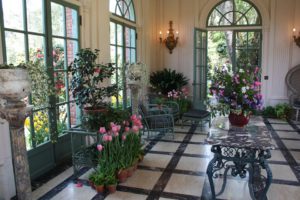Tips to Prune Houseplants

Growing and maintaining indoor plants may not require as much attention as outdoor plants but indoor plants still need to be maintained to control their height and natural form. A part of proper maintenance practice for houseplants is keeping them will prune.
Many years ago this was my job as an interior plant tech. I worked on many garden projects where pruning was required to help bring back the luster of many plants that look tacky, worn-out, and tired. Below we will be taking a closer look at how to prune houseplants.
How to Prune Houseplants
The ideal time to prune houseplants is at the beginning of the growing season which is late winter or early spring, when it comes to indoor woody plants however pruning can be carried out year-round. This type of pruning requires the removal of diseased or dead branches and leaves.
Flowering plants should only be pruned after the bloom period, if you carry out pruning procedures before the bloom time will remove unopened flower buds that will rob plants of producing beautiful flowers.
1. Examine your Houseplants- The time has come to give your houseplants a facelift so to speak, here’s what to do. Before pruning, take a step back to get a full view of your houseplant. Look for up (overgrowth) as well as outgrowth, look for disease or dead branches, also look for (yellow and brown leaves) diseased or dead leaves. Check for new-growth or latent buds, buds typically occur where the leaf joins the plant’s stems.
2. Pruning Tools- In the case of woody plants where the branches are thick a hand pruner is ideal but in the case of slender plants such as vines scissors can be used. Before using a pruner or scissors ensure they are sharp and sterilized for a clean cut and to avoid the spread of disease.
3. What to Prune- Proceed to remove dead or disease branches and leaves, now look for overgrowth and remove them as well, remember the goal is not only to remove dead and disease matter but to help the plant to maintain its natural form. If stems have rotten remove them altogether from the plant and don’t water until the soil has dried.
4. To deadhead or Not- All deadheading simple is the removal of spent or faded flowers, the importance of deading is not only to help your flowering plants retain their beauty but deadheading will encourage new fresh ( leaves and flowers) healthy growth. When removing spent flowers clip or pinch them back as close to the main stem as possible.

5. How to Prune- Make the cut just before or above a leaf node. When removing stems that are large try and make the cut as close as possible to the main stem. Try to avoid the removal of more than 25% of the plant, especially during the growing season.
Plants that Don’t Needs to be Pruned
Although many house plants need to be pruned to maintain their health and beauty there are some indoor plants that should not be pruned. Palms including Norfolk Island pines and some species of orchids for example. Once the tops of these plants are removed will not grow back. You can however remove any dead leaves. Just try to avoid the removal of the tops of these plants.
Bonus Points just for your
Below are reasons why we should keep our houseplants prune
- As was discussed earlier, to control the up growth as well as the outgrowth
- Helps plants to keep their natural form
- Decrease crowded areas
- Plants will look more attractive
- Pruning will encourage new growth
- A fuller healthier looking plant
- Pruning will encourage a healthier plant
- Improves the quality of the foliage and the stems
The final word on how to prune house plants
Growing indoor plants do have its benefits and advantages but in order to keep your houseplants growing healthy and beautiful requires some know-how and you have come to the right place for success. Just follow this guide and you will see how easy it is to maintain houseplants with these pruning tips.
About the author
Norman loves being in the garden, both at home and for his job....
he is 'Natures Little helper' being outdoors, growing his vegetables and flowers from an early age.
Now having spent over 22 years in the profession he want to give some of his knowledge to others...
his vast array of hints and tips you will find scattered over this site will help you no end growing plants in your garden.
